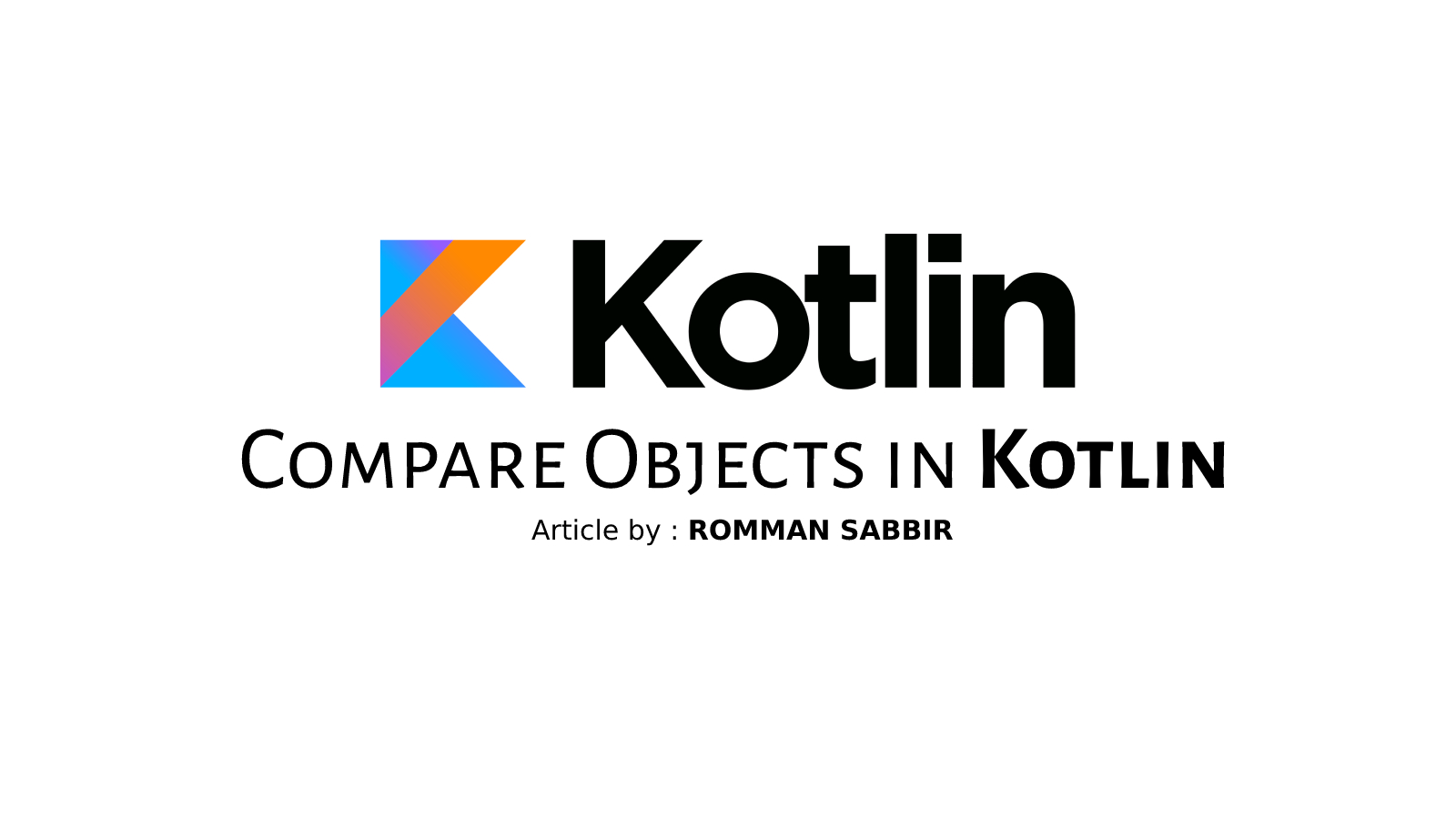Compare Objects in Kotlin
 Romman Sabbir
Romman Sabbir
When working with Kotlin in Software development, comparing objects becomes a common task. Whether we want to check if two objects contain the same data or if they reference the exact same instance, Kotlin provides several approaches to make this comparison.
How to Compare?
In this article, we'll explore various ways to compare objects in Kotlin, using simple language to make it easier for readers to understand.
equals()Method:The
equals()method is like a detective that looks inside objects to see if they have the same content.We can override this method in your class to define what "equality" means for your objects.
Example:
override fun equals(other: Any?): Boolean { // Your comparison logic here }
==Operator:The
==operator is a friendly shortcut for calling theequals()method.It's a quick way to compare two objects and see if they're the same content-wise.
Example:
if (obj1 == obj2) { // Objects are equal! }
hashCode()Method:Think of
hashCode()as a unique fingerprint for our objects.It's useful when dealing with collections like
HashSetorHashMap.Example:
override fun hashCode(): Int { // Your hashing logic here }
Using
data classes:Kotlin's
dataclasses are like magical creatures that automatically generateequals(),hashCode(), andtoString()methods based on the properties you declare in the constructor.Example:
data class MyClass(val property: String)
Reference Equality with
===:The
===operator checks if two references point to the exact same object.It's like asking, "Are these two variables holding hands with the same object?"
Example:
if (obj1 === obj2) { // References point to the same object! }
Custom Comparison Logic:
Sometimes, we need to play detective and define our own rules for equality.
Create a function that compares objects based on our specific criteria.
Example:
fun areObjectsEqual(obj1: MyClass, obj2: MyClass): Boolean { // Your custom comparison logic here }
Using
any()with Collections:If our objects are hanging out in a collection, use the
any()function to see if any element is equal to a given object.Example:
val myList = listOf(obj1, obj2, obj3) if (myList.any { it == obj1 }) { // obj1 is in the list! }
Component-wise Comparison for
ArraysandCollections:For arrays or collections, use
contentEquals()to compare them element-wise.It's like comparing apples to apples, one by one.
Example:
val array1 = arrayOf(1, 2, 3) val array2 = arrayOf(1, 2, 3) if (array1.contentEquals(array2)) { // Arrays are equal! }
Using
Reflectionfor Deep Comparison:Reflection is like using a magnifying glass to inspect and compare objects at a deeper level.
It's more advanced and resource-intensive, so use it wisely.
Example:
fun deepEquals(obj1: Any, obj2: Any): Boolean { // Your reflection-based comparison logic here }
Conclusion
In the world of Kotlin and Software development, comparing objects is a crucial skill. Whether we prefer the simplicity of equals() and ==, the magic of data classes, or the detective work of custom comparison logic, there's a method for every scenario. Choose the one that suits our needs, and happy comparing!
That's it for today. Happy Coding...
Subscribe to my newsletter
Read articles from Romman Sabbir directly inside your inbox. Subscribe to the newsletter, and don't miss out.
Written by

Romman Sabbir
Romman Sabbir
Senior Android Engineer from Bangladesh. Love to contribute in Open-Source. Indie Music Producer.